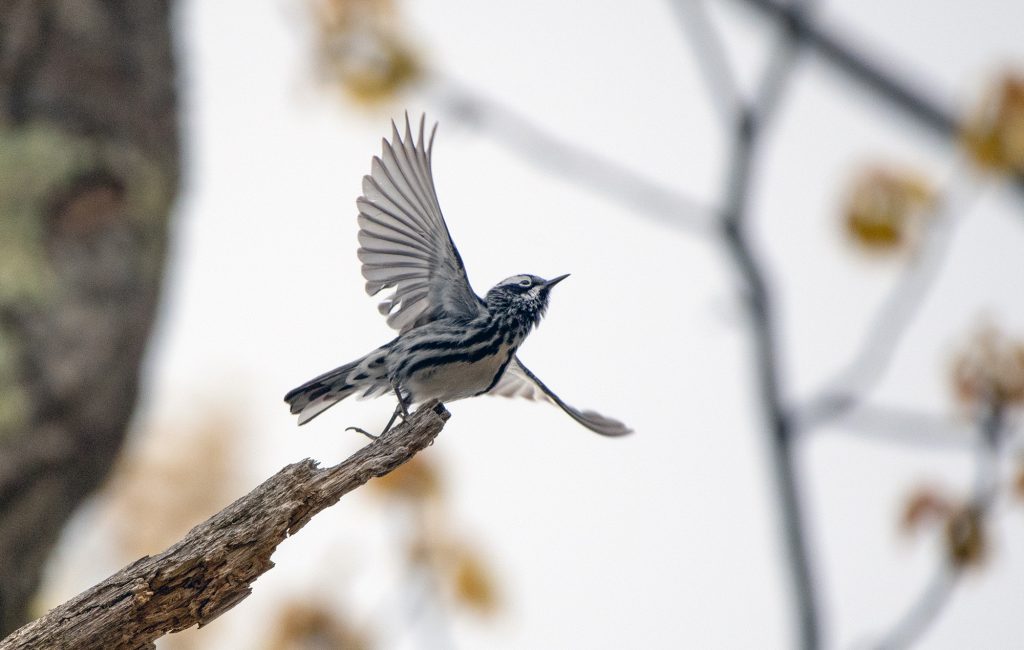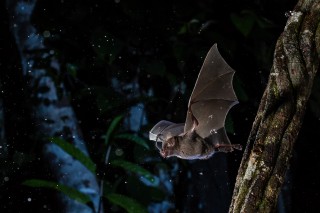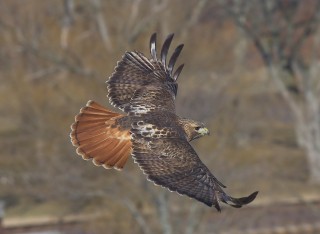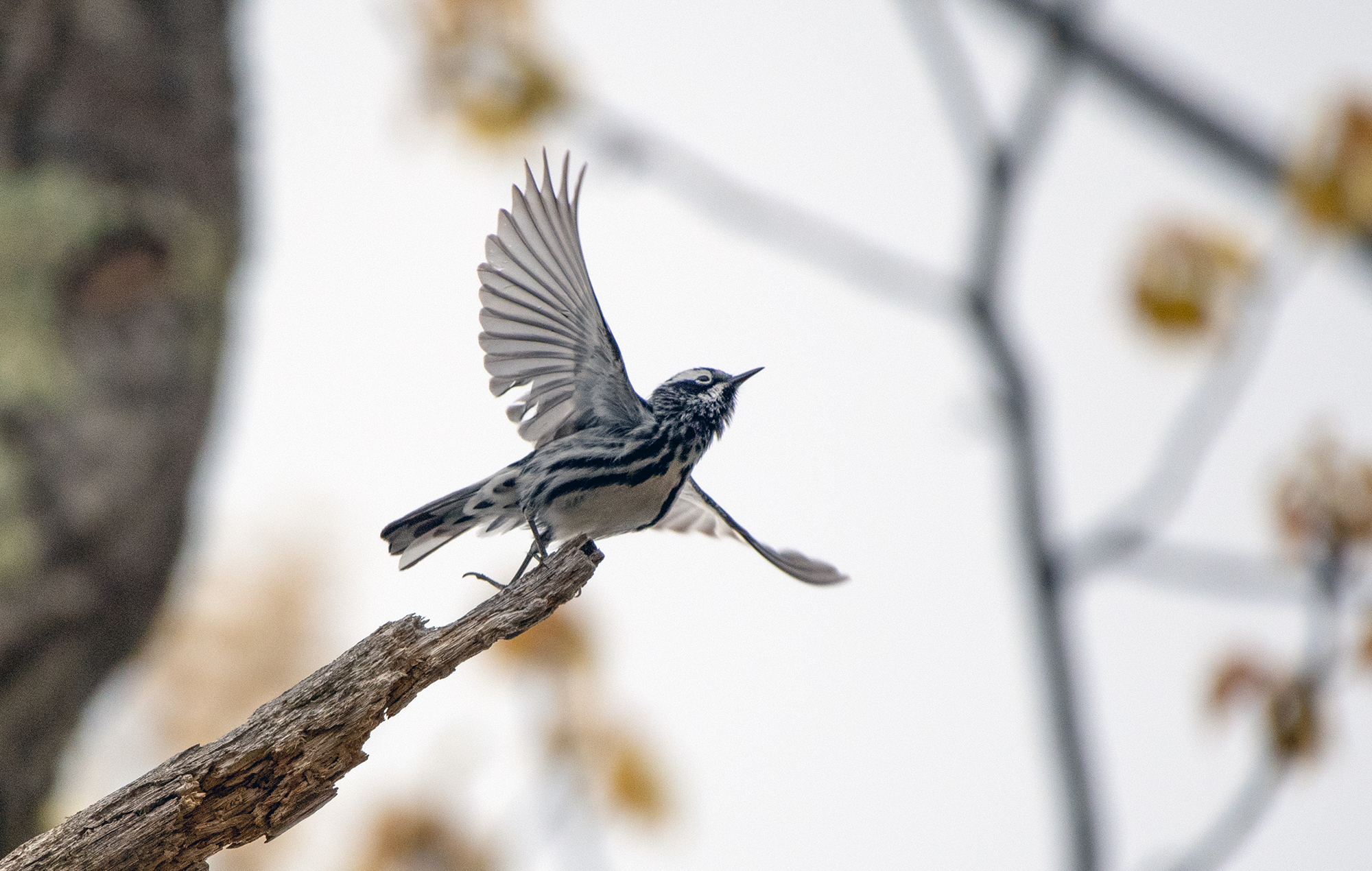
June 17, 2024
Taking Flight
- as seen by -
 Julie Larsen
Julie Larsen
With a wingspan of about eight inches, a black-and-white warbler (Mniotilta varia) takes flight in the forest along the rocky edge of Wolfe’s Neck Woods State Park in Maine.
I was watching black-capped chickadees (Poecile atricapillus) poke through the moist fibers of a stump in search of insects when I noticed other small songbirds hanging out in the flock – this warbler among them. Before takeoff, it had been perched firmly on a dead branch thanks to its lengthy hind claws.
Even though I photographed the warbler up in a tree, it was likely in the area to secure a nesting spot at ground level. According to Cornell’s All About Birds, black-and-white warblers look for a secret space at the base of a tree, rock, stump, or fallen log, or under a bush to build a cup-shaped nest.
Although classified as Least Concern by the IUCN Red List of Threatened Species, the black-and-white warbler likes to migrate at night and can collide with buildings and other structures while en route to seasonal breeding areas.
American Bird Conservancy’s Senior Director of Glass Collisions Program, Christine Sheppard, reports that almost fifty percent of bird collisions happen on homes and other buildings up to three stories, and virtually all the rest collide with structures up to 11 stories. Some cities are adopting lights-out-at-night programs to help avoid bird collisions during high migration times.
I’m glad this little one made it to Maine.
EDITOR’S NOTE: Check out Wild View’s new assignment, Spots and Stripes. Share your shots that show patterns like this strongly striped warbler with us.
Nikon D5 with Nikkor 200-500mm Lens




Leave a Comment